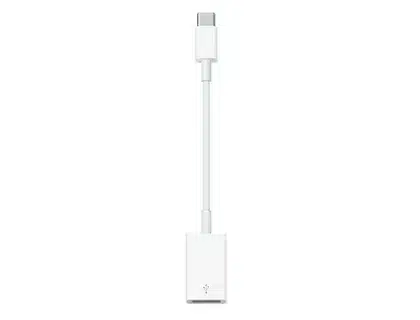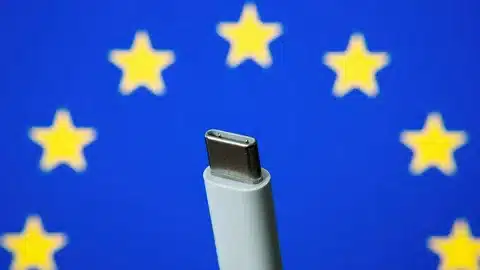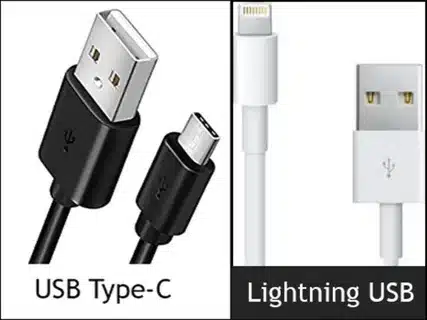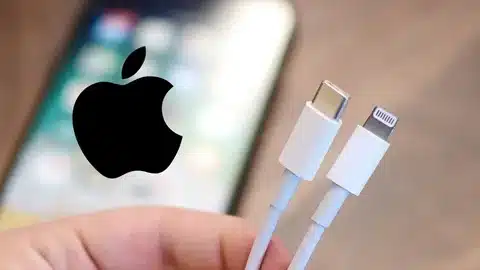Why not be able to charge your iPhone using your Android phone charger? Apple had to be forced to do it by the EU… sooner or later.
iPhone customers lived in a parallel charging world for more than ten years. At a time when the rest of the world had adapted to USB-C, Apple was still insisting on its own connector, Lightning, leading to a frustrating split within the consumer electronics market among smartphone makers. But through an act of theatrical regulatory investigation, European lawmakers did what decades of consumer grievances failed to accomplish, forcing the most valuable business on the planet to abandon its iconic charging connector.
It was not a shift in corporate policy, but a shift in the paradigm of how international technology standards are being developed and executed. In the Apple USB-C shift case, it is known that innovation, control, and consumer welfare are compounding phenomena in the current technology industry.
The Regulatory Earthquake That Shook Cupertino
The move to USB-C was not an internal development at Apple: it was a regulatory development that the company had not been expecting. In October of 2022, the European Union enacted the Radio Equipment Directive that small electronic devices sold in the EU will be required to be equipped with USB-C charging ports by December 28, 2024.
The law did not apply only to smartphones. It included tablets, digital cameras, headphones, handheld gaming consoles and portable speakers. The rule goes even further and mandates laptops to use USB-C charging by April 2026. This holistic solution implied that Apple could not just overlook the requirement or develop Europe-specific charging solutions and workarounds.
This was especially timely. Since, the EU is about 450 million consumers and one of the largest markets that Apple operates outside the United States, the compliance was not a choice. The rule provided manufacturers with about two years to change their product lines, which placed heavy pressure on those companies that continued to use proprietary charging solutions.
Environmental and Economic Motivations Behind EU Action

The irresistible environmental and economic signals that painted a grim picture with regard to the ineffectiveness of charging cables and disappointing customers informed the European Union’s decision to take a step towards centralization of charging ports.
Environmental Urgency: A European Parliament-commissioned research project has found that charging cables and adapters that are not used, including the now-outdated lightning cable, create 11,000 tons of electronic waste in the EU member countries alone annually. This figure does not include the environmental cost of manufacturing superfluous cables, which can perform the same task but will not fit with any other device brands.
Consumer Financing Effect: EU economists project that 200-400 euros/year went to waste on the purchase of charging cables and adapters because of device incompatibility. This is all the more staggering when you multiply by the 180 million number of households in the union; that is, billions of dollars of unnecessary consumer expenditure.
Market Efficiency: The charging market was never fixed, and because of that, the stores have been compelled to go ahead and sell a massive selection of various types of cables that were not only more costly but also more painful as the charging market moves are never in the final development stages. The concept of standardization was to make supply chains easier to manage and reduce manufacturing overhead in the entire electronics industry.
As part of the cost-benefit analysis, the EU demonstrated that the temporary regulatory intervention would have long-term cost-saving effects on consumers, manufacturers, and environmental remediation efforts.
Apple’s Strategic Resistance Campaign

Apple’s response to the USB-C requirement demonstrated that Apple is philosophically resistant to the outside-the-box design. The Cupertino-based giant established a technical lobbying program on the technological sovereignty and innovation questions.
Innovation reasons: Apple managers claimed that the introduction of technical standards that the government was applying would lead to a slowdown in the development of technology until the current USB-C standard. In their claim, they pointed out that these imperatives of regulation would complicate the ability to come up with better solutions to charges, and restrict the potential of innovation and, in fact, necessitate a technological bottom which will require decades to match.
Proprietary Ecosystem Defense: Lightning was not a charging port to Apple – it was a key component of an integrated ecosystem strategy that the company embraced around its proprietary Lightning port. The proprietary connector was used to ensure that iPhone accessories were not sold out of the Apple-controlled marketplace and that the company received substantial licensing revenue from third-party manufacturers.
Precedent Concerns: Apple was concerned that any successful charging port legislation would be exploited to pressurize governments into enforcing other technical standards in the regulatory framework, including but not limited to operating systems, app stores, or hardware structures. The effect of this regulatory precedence was a threat to the firm as regards its ongoing exclusive technological policy.
But despite these reasons, Apple finally understood that market access was even stronger than philosophical poses. Regulatory deadlines were close by, and the transition that the company was secretly preparing was none too far away.
The Technical Revolution: USB-C vs Lightning

An overview of the technical features of Lightning and USB-C will explain why the transition was actually useful to the users of iPhones, despite the fact that Apple was not keen to make this transition initially.
Power delivery: USB-C is more powerful than Lightning: in ideal conditions, USB-C can provide power at 100 watts, as opposed to about 12 watts delivered by Lightning. This difference can be translated to much lower charge time, and with USB-C, you can potentially vastly accelerate the charge speed, both long-term charging of smartphones and short-term charging of laptops and high-power equipment, on the same cable…
Performance USB 2.0(480 Mbps) Data transfer Lightning has the capability of USB 3.0(5 Gbps), USB 3.1(10 Gbps), or USB4(40 Gbps) throughput. The paradigm shift is to users who might have to move very large file,s which would dramatically increase their speed in transferring videotapes or who might have to back up their systems.
Universal Compatibility: No,w all iPhone users can share their charging cables with Android users, laptop users, and millions of other types of devices thanks to the popularity of USB-C. That compatibility goes beyond charging, to video output, to the fact that it can both connect to external storage devices and that the process can be made universal, such that the peripheral devices can also be standardized.
Future-Proofing: Contrary to Lightning, which is an Apple-only closed standard, USB-C is being developed as an industry standard. The USB-C specification is regularly updated with new features: increased power delivery, improved data protocols, and quality video standards.
Timeline of Apple’s USB-C Implementation
The decision to replace USB-A with USB-C was a mind-calming, brilliant action by Apple and demonstrated that the firm could handle a tectonic technological change in their Apple shop without creating a titanic ripple effect on the ecosystem.
2023, Apple announced the iPhone 15 series as the first line of smartphones to use USB-C charging. The company put it in the context of an initiative rather than a regulation, emphasizing the pure technical superiority and not the law.
USB-C ports on the new iPad Pros in October 2023 added some standardization to the Apple high-end tablet line. This move helped to roll out USB-C as the premium connectivity standard of the company.
Early 2024: Apple began making its line of accessories (AirPods cases, Apple Pencil charging solutions, etc) USB-C compliant. It can be observed that this step-by-step approach helped the current customers to adjust without forcing them to change their wholesale accessories immediately, including wireless charging solutions.
The end of 2024: Apple officially stopped the listing of the remaining Lightning-compatible products in its active product range, and it has already met the deadline stipulated by the EU, dropping Lightning chargers.
Consumer Response: Benefits and Frustrations

The Apple USB-C transition received mixed but largely positive customer feedback, and the advantages, including improved accessory compatibility, eventually outweighed the inconveniences related to time.
Short-term benefits: iPhone users were quick to discover the practical advantages of going USB-C. The less time spent charging the devices, as well as the faster rates of data transfer, made the process of device backup and file transfer much more successful. Things were made easier by the fact that the same cable could be applied to a variety of different devices, and it also helped to reduce the need to carry a variety of different charging options.
Possibility to borrow charging cables to friends and family members on Android: This feature was perhaps the most highly touted benefit of iPhone users. A simple change of this kind seemingly led to the removal of millions of daily frustrations and emergency charging cases.
Accessory Transition Issues: This was seen as the negative aspect of accessory obsolescence. Lightning car chargers, speaker docks, and charging stations had to all be reconfigured (or redesigned) in order to work with the new mobile devices. First iPhone 15 model users were forced to purchase new accessories or use their money on Lightning-to-USB-C adapters.
Long-term Satisfaction: 9 months following the launch of the iPhone 15, polls revealed that more than a third of users were glad to move to USB-C despite the early accessory compatibility issues. The payoff over time in terms of consumer satisfaction was not as high as the inconvenience of changing the older accessories.
The Brussels Effect: How EU Rules Became Global Standards
The case of Apple switching to USB-C around the world instead of developing models that are region-specific is an ideal example of the Brussels Effect regarding a tech giant, in which European Union standards effectively become global standards because of the economic realities of phones sold.
Manufacturing Economics: It would have added phenomenal complexity and cost to the supply chain at Apple to make different models of the iPhone depending on the global region. The efficiency of the company is based on standard manufacturing processes that are able to serve the world markets at the same time save money on other electronics.
Regulatory Arbitrage Prevention: Apple knew that the continued existence of Lightning in non-EU markets and the adoption of USB-C in Europe would create grey market opportunities, where a European phone with a Lightning port could be smuggled to other countries and disrupt the price-setting of the company in the European Union.
Consumer Expectation Management: After European iPhone users started enjoying the benefits of USB-C, Apple realized that other market users would also need the same features. Any continuation of technological differences among regional markets would have resulted in customer satisfaction problems and challenges in addressing consumer expectations USB-C standard.
Supply Chain Simplification: From the introduction of USB-C to the whole world, Apple was able to simplify the process of sourcing components, production, and quality control. This standardization eventually minimized cost and complexity throughout the entire supply chain operation of the company.
Industry-Wide Implications and Future Trends
Apple shifting to USB-C suggests more fundamental changes in the manner that technology companies support proprietary standards and regulation compliance within an increasingly interconnected global marketplace.
Standardization Momentum: The adoption of open standards by Apple will further encourage other manufacturers to use open standards rather than developing their own proprietary alternatives, in accordance with new industry standards. The success of the EU charging regulation could be used as an incentive to encourage other such standardization of various forms of technology..
Regulatory Confidence: Standardization of charging ports has proven in practice that well-designed regulatory structures can promote positive technological change without retarding technological progress. The success can also trigger the regulators to resolve other compatibility issues that affect consumers’ micro USBs.
Innovation Within Standards: The openness of the USB-C and USB-C charging standards is now generating the sort of innovation that Apple used to be losing sleep over. The industry works together to develop new features like a faster charging protocol, a higher data transfer standard, and a superior durability feature nearly every day apple watch.
Shifts in Corporate Strategy: Technology companies can now be much more likely to consider the trends in regulation in designing their products, and the ultimate design decisions are more likely to regard consumer-friendly design than they would otherwise be new iphone.
Key Takeaways for Consumers and Industry
The Apple USB-C conversion can provide a number of useful lessons about how to impose control over technology, how corporate change may proceed, and how consumer welfare is addressed in the current electronics environment.
Regulatory Power: The EU had an opportunity to show that under attentive and careful regulation, even the largest technological companies could obtain positive regulatory results and introduce user-friendly norms. This case law supports the view that the market does not always generate the best outcomes in the interest of users EU law.
Universal Benefits: USB-C will never be as popular as it was when Apple released it, but at some point or another, it will also reap the rewards of faster charging and compatibility, coupled with a reduction in electronic waste. The adoption shows that standardization, in fact, can be employed to augment, rather than to limit, a technological constraint.
Corporate Adaptability: The ability to seamlessly integrate USB-C across the Apple product line-up showed that the company was able to execute major technological shifts without compromising the quality and usability of its products. It was able to make the change without consequential technical challenges and without customer service complaints.
Environmental Progress: is not specific to Apple, but is the behavior in the industry, to the extent of sustainability of the design, to the extent of minimization of its waste, that is being regulated. Similar environmental laws in other forms of technology may be inspired by the success model.
Consumer Empowerment: Standardization effort finally left the decision to charge or not to charge a consumer to the consumer, rather than allowing the manufacturer to determine the consumer’s decision using proprietary standards. Such transformation is a great success of user control and device compatibility the USB-C connector.
Conclusion
Another step in the technology and corporate responsibility regulation front is the precedent of the European Union compelling Apple to implement USB-C. Through targeted legislation in reaction to actual consumer and environmental concerns, EU regulators have achieved in a single move what years of market agitation did not accomplish – to make iPhones chargeable. Apple did not like the change in the name of the innovation. The result of the change was an increased speed of the charges, compatibility, and a lesser quantity of the waste element of the electronic by increasing compatibility of the charging without decreasing the quantity of the technology.
The Brussels Effect was a mechanism used to enforce the fact that European rules would be reproduced as international rules; not only would they have a useful purpose on an international level, but also that a small step towards regulation could be turned into a reform, even in a situation where corporate interests were at stake. The new universal charging standard, USB-C, demonstrates that, given decisive policymakers, consumer welfare and environmental protection can be complements to technological advancement as well.





